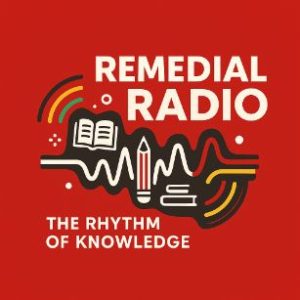Discover how rural-urban migration affects housing, infrastructure, and living conditions in East Africa. Learn about its causes, effects, and sustainable solutions for better urban planning.
Introduction
Rural-urban migration is one of the most significant social and economic transformations in East Africa. Every day, thousands of people move from villages to towns and cities in search of better opportunities—jobs, education, healthcare, and modern lifestyles. While migration contributes to urban growth and economic activity, it also puts immense pressure on housing, services, and living conditions.
In this blog, we explore the causes of rural-urban migration, the effects on housing and living conditions, and what can be done to manage this migration sustainably.
What is Rural-Urban Migration
Rural-urban migration refers to the movement of people from the countryside (rural areas) to towns and cities (urban areas). It is driven by both “push” and “pull” factors:
Push Factors (reasons people leave rural areas):
- Poverty and lack of jobs
- Poor social services (education, health, transport)
- Climate challenges like drought or floods
- Land shortages due to population growth
Pull Factors (what attracts people to cities):
- Availability of jobs, especially in industries and services
- Access to better education and healthcare
- Improved infrastructure like roads, electricity, and internet
- Modern lifestyles and entertainment
While these migrations are natural in developing economies, unplanned migration often leads to overcrowding, slums, and strain on urban resources.
Impact of Rural-Urban Migration on Housing
a) Shortage of Affordable Housing
- Urban centers often lack enough low-cost housing for the increasing number of migrants.
- Many people are forced to rent or build makeshift homes in slums and informal settlements.
b) Growth of Slums
- Migrants settle in poorly planned areas with no building permits.
- Slums lack proper roads, drainage, toilets, or safe water.
- Examples: Kisenyi in Kampala, Kibera in Nairobi, Tandale in Dar es Salaam.
c) Rising Cost of Rent and Land
- High demand for housing leads to expensive rent, even in poor conditions.
- Landlords exploit overcrowding, making profits from substandard housing.
d) Pressure on Land and Housing Services
- Urban authorities struggle to supply electricity, garbage collection, and water to the ever-growing housing demand.
Impact on Living Conditions
Rural-urban migration affects more than just housing. It changes how people live and access services.
a) Overcrowding
- Too many people live in small spaces, sometimes 5-10 people in one room.
- Overcrowding increases the risk of diseases like TB and COVID-19.
b) Poor Sanitation
- Many slums have few or no toilets. People share latrines or practice open defecation.
- Drainage systems are blocked or non-existent, leading to floods and cholera outbreaks.
c) Insecurity
- High unemployment and congestion in slums contribute to crimes like theft, drug abuse, and gender-based violence.
d) Pressure on Urban Services
- Hospitals, schools, and roads are overstretched.
- Long queues, poor learning environments, and traffic jams become common.
e) Social Disconnection
- Migrants often leave family and cultural support behind.
- The result is loneliness, mental stress, and poor community engagement.
Effects on Urban Planning and Development
a) Strain on Urban Budgets
- Governments must invest more in housing, sanitation, roads, and security.
- When unplanned, urban growth becomes difficult to manage.
b) Environmental Degradation
- Forests and wetlands are cleared to build slums.
- Poor waste disposal pollutes rivers, soil, and air.
c) Unbalanced Development
- Cities grow rapidly while rural areas remain underdeveloped.
- The gap between rural and urban areas widens, worsening inequality.
Solutions to the Challenges of Rural-Urban Migration
While we cannot stop people from moving to cities, governments and communities can reduce the negative impacts through strategic actions:
a) Invest in Rural Development
- Improve rural roads, hospitals, and schools.
- Support agriculture and rural industries to create jobs.
b) Affordable Housing Projects
- Governments and private investors should build low-cost houses with access to water, toilets, and power.
c) Urban Planning and Land Use Control
- Cities should create master plans for expansion and settlement.
- Enforce land use laws to prevent unplanned construction.
d) Empower Local Governments
- Give municipalities funds and authority to manage growing urban populations.
- Encourage community participation in planning.
e) Slum Upgrading Programs
- Instead of demolishing slums, improve them with toilets, drainage, lights, and access roads.
f) Job Creation Programs
- Train youth in urban and rural areas for self-employment in trade, crafts, and digital work.
Long-Term Benefits of Managing Migration
When well managed, rural-urban migration can benefit society by:
- Creating vibrant urban economies
- Promoting innovation and entrepreneurship
- Supporting infrastructure development
- Increasing diversity and cultural exchange
But if neglected, it results in urban poverty, crime, disease, and social instability.
Conclusion
Rural-urban migration is a natural outcome of development, but it comes with complex challenges that must be addressed urgently. Without proper planning, housing shortages and poor living conditions will continue to worsen in East Africa’s growing towns and cities.
By investing in rural areas, building affordable housing, and improving urban planning, East African governments can transform migration into a driver of inclusive growth. The future of our cities—and the well-being of millions—depends on it.
Frequently Asked Questions (FAQs)
**1. Why do people move from rural to urban areas?
People migrate to cities in search of jobs, better services, education, and improved lifestyles. Rural poverty and lack of opportunities are major push factors.
2. What are the main problems caused by rural-urban migration?
It leads to housing shortages, slum growth, poor sanitation, overcrowding, and pressure on urban infrastructure.
3. How does rural-urban migration affect the environment?
Migration contributes to unplanned urban sprawl, deforestation, water pollution, and poor waste management.
4. What can be done to solve housing challenges in cities?
Solutions include building affordable housing, upgrading slums, enforcing land use plans, and supporting rural development to reduce migration pressure.
5. Is rural-urban migration a bad thing?
Not always. If managed well, it can boost economic growth. But if ignored, it can create serious social and environmental problems.


Leave a Reply